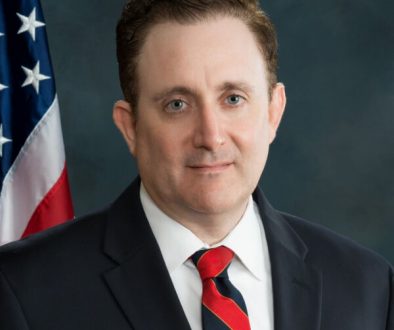Dr Adrian Stallwood on animal experiments
Dr Stallwood, who teaches medical undergraduates using increasingly realistic manikins and models, argues that to influence the public against animal experiments, “we must communicate specifics, not slogans.”
 Dr Adrian Stallwood graduated in Medicine from St Bartholomew’s Hospital Medical School, London in 1995. He then worked as a junior doctor in London, in high-intensity posts where learning took place almost exclusively “on the job”.He relocated to Wales in 1997, and after further hospital and community practice, began a career in Emergency Medicine. He is now a Specialty Doctor in Emergency Medicine at Hywel Dda Health Board, working in a team providing a major acute 24/7 service.He is also a skilled clinical teacher, with responsibility for training and assessing Cardiff University undergraduates and Foundation doctors.\n\nHe holds Instructor status in Advanced Life Support for the Resuscitation Council UK.
Dr Adrian Stallwood graduated in Medicine from St Bartholomew’s Hospital Medical School, London in 1995. He then worked as a junior doctor in London, in high-intensity posts where learning took place almost exclusively “on the job”.He relocated to Wales in 1997, and after further hospital and community practice, began a career in Emergency Medicine. He is now a Specialty Doctor in Emergency Medicine at Hywel Dda Health Board, working in a team providing a major acute 24/7 service.He is also a skilled clinical teacher, with responsibility for training and assessing Cardiff University undergraduates and Foundation doctors.\n\nHe holds Instructor status in Advanced Life Support for the Resuscitation Council UK.
Antidote Europe (AE): Please could you tell us at what time in your studies or during your career you first became aware or uncomfortable with the issue of animal experiments? Was this based purely on ethical concerns or scientific ones as well?
Adrian Stallwood (AS): It goes back a long way. During my time at secondary school, I was influenced in a beneficial fashion by a few of my stronger-willed friends. They refused to crack open and dissect fertilised chicken eggs that had been incubated by our Biology Faculty, or to dissect Xenopus laevis toads. The issue was less physical during my preclinical studies at St Bartholomew’s Medical School in London, but I found it hard to understand why we dissected human cadavers in anatomy, but studied dogs in pre-clinical physiology or mice in pharmacology. Physiology was actually a struggle to learn as there were so many references to canine studies that were not applicable to humans. During this time, I took leaflets from anti-vivisection organisations during street campaigns that shocked and upset me deeply. I still remember a pamphlet showing a primate with its head cut open, in order to research Parkinson’s disease. Medical scientists were clearly involved in a longstanding and ongoing tradition of animal cruelty. But I was a student, feeling fearful of censure and also guilty by proxy involvement. The sense of cognitive dissonance was, in retrospect, too uncomfortable back then, so I chose to campaign for endangered species and rainforests rather than against vivisection. It was an issue I would come back to, but I feel ashamed it took me the best part of twenty years.
AE: You are currently a speciality doctor trained in Accident and Emergency. Having been trained in Advanced Trauma Life Support (ATLS), were you given the option of completing this course without the use of animals? If so, what apparatus and techniques did you use to obtain your accreditation?
AS: This issue arose for me very recently. Up-to-date ATLS training is a prerequisite of working in Emergency Medicine. I have just re-certified, and achieved Instructor Potential status. But during the course, I found that three of the skill stations involved “medical meat” — slaughterhouse products that had been sterilised and prepared for use by trauma trainees. I was faced with a sheep larynx, bovine chest and pig trotter, and expected to insert various tubes into each. The smell was appalling, and it was obvious that other candidates, whilst not being fundamentally opposed, found the procedures distasteful. Being already proficient in several skills — having learned on human patients under supervision — I managed to avoid the trotter and chest, but I could not escape performing a cricothyroidotomy on a sheep larynx. ATLS courses, designed and overseen by the American College of Surgeons, used to widely employ anaesthetised animals for trauma training, but the practice has now all but died out. But the fact that they still employ animal cadavers shows that they cannot completely kick the habit. I teach medical undergraduates a whole variety of skills using increasingly realistic manikins and models; it is clear to me that such models are better for training than dead animal parts. The students can get proficient in the “nuts and bolts” of a technique, in preparation for supervised learning in a clinical environment. I have decided not to instruct on ATLS courses that involve the use of medical meat.
AE: Have you seen any change over the years in the UK with respect to attitudes by the public on animal use in science and medical research? And what about within the research community itself? What needs to happen next in your view?
AS: I cannot speak for the research community. As regards public attitudes, I think these things tend to wax and wane, and are heavily influenced by the mass media. It seems to me that there was an upsurge in concern in the early years of the century, when high-profile campaigns against new primate facilities and other vivisection centres were taking place. However, those campaigns, despite some very important victories, allowed a biased media to portray animal rights activists as dangerous threats to society, and stymied the emergence of a wider movement. Unlike some ecological or social campaigns, which have since gained mainstream acceptance, the AR movement still seems to be marginalised. This is not due to error or even unpopularity in the arguments we present (what is so funny about the concept that animals have rights not be abused?). It is due to big business control over media and government — in short, abuse of power. Groups like Understanding Animal Research in the UK are the PR front for the vivisectors, and too often, their rhetoric is allowed to dominate. In particular, the entirely spurious claim that animal experiments are essential to medical progress still has traction with large sectors of society. I think a key priority of the AR movement as a whole is a back to basics approach to public education, with an emphasis on the facts. We must communicate specifics, not slogans.
AE: Have you ever been the victim of institutional intimidation either at University or in your hospital environment as a result of your views on animal research?
AS: Never. But like I say, I have only started to speak out recently. Time will show if I experience any kind of bullying, but thus far, everybody I speak to on this issue is horrified by the reality of vivisection. Curiously, I find nursing staff far more receptive to this topic than doctors, who are often very defensive. One junior doctor, obviously annoyed, tried frantically Googling “animal experiments” in an attempt to show me the value of this work. Mind you, he had asked me where he could acquire a gun dog earlier in the shift!
AE: In our eyes, you are a rare and courageous individual. Are you ever asked by members of the public to explain the fact that, if animal research is indeed counter-productive, why there are so few medical scientists willing to speak out against it, like yourself?
AS: Firstly, I think there are many individuals working to defend animals with considerably more courage than myself. This includes those who risk arrest and imprisonment for non-violent protest, or those who have lost their jobs due to institutional harassment. I am certainly asked about the “conspiracy of silence” issue within the medical profession. Part of the explanation, I think, is that acknowledging the extent of suffering inflicted is deeply disturbing to medical professionals. I myself can testify to that — we find it hard to resolve the paradox that caring people, with an ongoing commitment to alleviating distress, should be part of a system that elsewhere tortures sentient beings. Healthcare professionals in university teaching hospitals, for example, have to walk past these laboratories on a daily basis, and are employed by the same public sector bodies. And I can imagine the complex psycho-protection that animal researchers must have to employ when their animal “sacrifices” continually end up being in vain. There are grounds for optimism, however. There are groups of clinicians and scientists that are speaking out, like the UK-based Safer Medicines Trust. Behind the scenes, I don’t think animal research commands the support its lobby groups would have us believe.
AE: We would like to sincerely thank you for taking the time to participate in this interview. Are there any other points that you would like to mention in closing that were not covered in the interview?
AS: For me, the major issue regarding animal experiments is the secrecy. Those of us who are opposed are working continually to expose these practices, but there is much progress we still need to make. Vivisection is big business, and we are up against some formidable opponents. But I feel we can gain wider support by the constant revelation of the cruelty involved, and by robustly challenging the myth that animal research is indispensable. I can also see that the our struggle depends at grassroots level on those who are brave enough to protest and take non-violent direct action in support of animals. I think it is a problem that the mass media and government continually smear compassionate activists as terrorists — but that has always been a tactic of power-over. I am sure history will vindicate the AR movement as peaceful and ethical.




